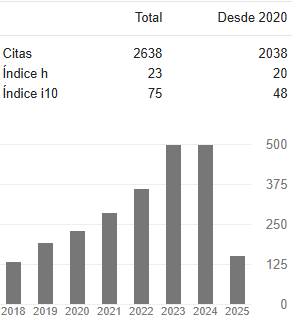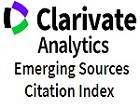Formulation of a model to determine current and potential zones of cultivation for Hass avocado (Persea americana Mill) in the department of Risaralda based on edaphoclimatic and fruit quality variables
DOI:
https://doi.org/10.31908/19098367.2993Keywords:
Hass Avocado, Machine Learning, Random Forest, Potential Crop ZonesAbstract
Agriculture is one of the fundamental pillars of all societies worldwide, and the proper management of information allows timely decisions to be made about the advancement of companies. National and departmental government entities support emergent agricultural endeavors that provide a good opportunity to increase levels of production and commercialization of products [1], such as the cultivation of Hass avocado (Persea americana Mill). Among the challenges associated with this type of cultivation is the need to find potential areas for planting and suitable productivity and to contribute to technological developments in the agricultural sector, benefiting Hass avocado growers from the department of Risaralda. Therefore, in this study, a model that allows the determination of current and potential areas of cultivation for Hass avocado (Persea americana Mill) in this department based on edaphoclimatic variables and fruit quality is proposed. This model takes advantage of current trends in precision agriculture, including techniques derived from machine learning and supervised learning algorithms, among which is random forest
Downloads
References
Perfetti, J.J., Bravo-Ureta, B.E., García, A., Pantoja, J., Delgado, M., Blanco, J., Jara, R., Moraga, C., Paredes, G., Naranjo, J., et al.: Adecuación de tierras y el desarrollo de la agricultura colombiana: políticas e instituciones. Fedesarrollo 447, 456 (2019)
El-Bendary, N., Elhariri, E., Hazman, M., Saleh, S.M., Hassanien, A.E.: Cultivation-time recommender system based on climatic conditions for newly reclaimed lands in egypt. Procedia Computer Science 96, 110–119 (2016)
Singh, R., Kumari, T., Verma, P., Singh, B.P., Raghubanshi, A.S.: Compatible package-based agriculture systems: an urgent need for agro-ecological balance and climate change adaptation. Soil Ecology Letters 4(3), 187–212 (2022)
Dreher, M.L., Davenport, A.J.: Hass avocado composition and potential health effects. Critical reviews in food science and nutrition 53(7), 738–750 (2013)
Ramírez-Gil, J.G., Ramelli, E.G., Osorio, J.G.M.: Economic impact of the avocado (cv. hass) wilt disease complex in Antioquia, Colombia, crops under different technological management levels. Crop protection 101, 103–115 (2017)
MADR, M.d.A.y.D.R.: CADENA DE AGUACATE, Indicadores e instrumentos. Lect Econ. 2019;52(52):165–94 (2019)
Martínez, D.H.F., Galvis, C.P.U.: Tic para la investigación, desarrollo e innovación del sector agropecuario (2018)
Orozco, O. A., Llano Ramírez, G.: Sistemas de información enfocados en tecnologías de agricultura de precisión y aplicables a la caña de azúcar, una revisión. Revista Ingenierías Universidad de Medellín 15(28), 103–124 (2016)
Van Klompenburg, T., Kassahun, A., Catal, C.: Crop yield prediction using machine learning: A systematic literature review. Computers and Electronics in Agriculture 177, 105709 (2020)
Machado, D.F.T., Silva, S.H.G., Curi, N., Menezes, M.D.d.: Soil type spatial prediction from random forest: different training datasets, transferability, accuracy and uncertainty assessment. Scientia Agricola 76, 243–254 (2019)
Jyothika, P., Ramana, K.V., Narayana, L.: Crop recommendation system to maximize crop yield using deep neural network.
Vite Cevallos, H., Carvajal Romero, H., Barrezueta Unda, S.: Aplicación de algoritmos de aprendizaje automático para clasificar la fertilidad de un suelo bananero. Conrado 16(72), 15–19 (2020)
Katarya, R., Raturi, A., Mehndiratta, A., Thapper, A.: Impact of machine learning techniques in precision agriculture. In: 2020 3rd International Conference on Emerging Technologies in Computer Engineering: Machine Learning and Internet of Things (ICETCE), pp. 1–6 (2020). IEEE
Geetha, V., Punitha, A., Abarna, M., Akshaya, M., Illakiya, S., Janani, A.: An effective crop prediction using random forest algorithm. In: 2020 International Conference on System, Computation, Automation and Networking (ICSCAN), pp. 1–5 (2020). IEEE
Pozdnoukhov, A., Kanevski, M.: Machine learning algorithms for analysis and modeling of geospatial data. In: Annual Conference of International Accociation for Mathematical Geology (IAMG 07), Beijing, China, 25-31 August (2007)
Carranza, J.P., Salomón, M.J., Piumetto, M.A., Monzani, F., MONTENEGRO CALVIMONTE, M., Córdoba, M.A.: Random forest como técnica de valuación masiva del valor del suelo urbano: una aplicación para la ciudad de río cuarto, córdoba, argentina. In: Congresso Brasileiro de Cadastro Técnico Multifinalitário-COBRAC (2018)
Sekulic, A., Kilibarda, M., Heuvelink, G.B., Nikoli ́c, M., Bajat, B.: Random Forest Spatial Interpolation. Remote Sensing 12(10), 1687 (2020)
Mariano, C., Monica, B.: A random forest-based algorithm for data-intensive spatial interpolation in crop yield mapping. Computers and Electronics in Agriculture 184, 106094 (2021)
Kuhn, M. Johnson, K. Kuhn, M, Johnson, K. Classification trees and rule-based models. Applied predictive modeling, 369–413 (2013)
Talebi, H., Peeters, L.J., Otto, A., Tolosana-Delgado, R.: A truly spatial random forests algorithm for geoscience data analysis and modelling. Mathematical Geosciences 54, 1–22 (2022)
Rajeshwari, M., Shunmuganathan, N., Sankarasubramanian, R.: Performance of soil prediction using machine learning for data clustering methods. Journal of Algebraic Statistics 13(2), 858–864 (2022).
FAO - GAEZ Data Portal.: Data sheet Persea americana. Available from: https://gaez.fao.org/pages/ecocrop-find-plant (2023)
Downloads
Published
Issue
Section
License
Copyright (c) 2024 Entre ciencia e ingeniería

This work is licensed under a Creative Commons Attribution-NonCommercial 4.0 International License.



















